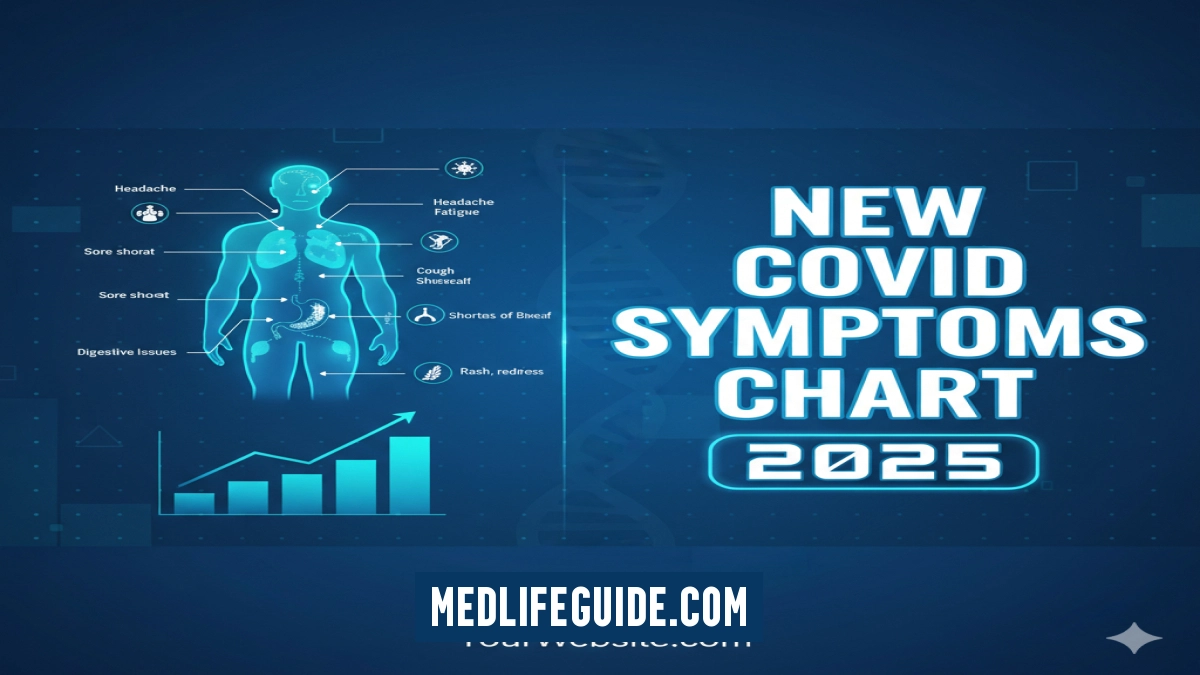As we move deeper into 2025, the landscape of COVID-19 continues to evolve, bringing with it new challenges and insights. Understanding the latest symptomatology is crucial—not only for individuals seeking to protect their health but also for healthcare professionals aiming to provide timely and accurate care. This article offers a comprehensive, expert-driven exploration of the updated symptom profile, integrating nuanced analysis and practical wisdom to empower readers with actionable knowledge.
The Evolution of COVID Symptoms: A Dynamic Health Puzzle
Since the onset of the pandemic, the virus responsible for COVID-19 has undergone multiple mutations, each influencing how symptoms manifest. Early in the pandemic, symptoms such as fever, dry cough, and loss of taste or smell dominated clinical presentations. However, as new variants emerged, the symptom profile shifted, necessitating continuous updates to symptom charts used by clinicians and public health officials.
Why Symptom Tracking Remains Vital
Symptom tracking is more than a checklist; it is a frontline tool for early detection, isolation, and treatment. The subtle changes in symptom patterns can signal the emergence of new variants or shifts in viral behavior. For individuals, recognizing these symptoms early can mean the difference between mild illness and severe complications.
The 2025 Symptom Chart: Key Updates and Insights
The latest symptom chart reflects a broader and more nuanced spectrum of clinical signs. This evolution is informed by extensive data collection, clinical observations, and epidemiological studies conducted worldwide.
Core Symptoms to Monitor
- Persistent Fatigue and Malaise: Unlike the acute fatigue seen in earlier waves, 2025 reports indicate a more prolonged and fluctuating fatigue pattern, often described as “brain fog” or cognitive sluggishness.
- Gastrointestinal Disturbances: Symptoms such as nausea, diarrhea, and abdominal pain have become more prominent, suggesting a stronger gastrointestinal involvement.
- Neurological Manifestations: Headaches, dizziness, and in some cases, mild neuropathic pain are increasingly reported, highlighting the virus’s impact beyond the respiratory system.
- Respiratory Symptoms: While cough and shortness of breath remain common, their intensity and duration vary widely, often accompanied by subtle wheezing or chest tightness.
- Dermatological Signs: New skin manifestations, including rashes and “COVID toes,” continue to be documented, providing additional diagnostic clues.
Emerging Symptoms Worth Noting
- Sleep Disturbances: Insomnia and altered sleep patterns have surfaced as significant complaints, potentially linked to the virus’s neurological effects.
- Mood and Anxiety Changes: Increased reports of anxiety, depression, and mood swings suggest a psychosomatic dimension to the illness.
- Cardiovascular Symptoms: Palpitations and mild chest discomfort, even in younger populations, warrant attention and further investigation.
Interpreting the Data: What Does This Mean for You?
Understanding these symptoms in isolation is insufficient. The interplay between them, their onset timing, and severity can provide critical insights into disease progression and appropriate responses.
Practical Tips for Symptom Monitoring
- Maintain a Symptom Diary: Track daily changes, noting new or worsening symptoms.
- Seek Medical Advice Promptly: Early consultation can prevent complications, especially if cardiovascular or neurological symptoms appear.
- Use Reliable Resources: Refer to updated symptom charts from trusted health organizations to stay informed.
- Consider Testing Even with Mild Symptoms: Given the variability, mild or atypical symptoms should not be dismissed.
Addressing Latent Queries: Beyond the Obvious
Many individuals wonder about the implications of these new symptoms on long-term health, vaccine efficacy, and treatment options. While research is ongoing, current evidence suggests:
- Long-Term Effects: Persistent symptoms, often termed “long COVID,” may include fatigue, cognitive difficulties, and mood disorders, underscoring the need for comprehensive post-infection care.
- Vaccination Impact: Vaccines continue to reduce severity and hospitalization rates, though breakthrough infections with mild or atypical symptoms are increasingly reported.
- Treatment Adaptations: Symptom management now often requires a multidisciplinary approach, integrating physical therapy, mental health support, and tailored pharmacological interventions.
Integrating Expert Perspectives: A Holistic View
To deepen understanding, it is valuable to incorporate insights from frontline clinicians and researchers. For example, Dr. Amina Patel, an infectious disease specialist, emphasizes the importance of recognizing neurological symptoms early to prevent long-term disability. Similarly, nutritionist Mark Liu highlights the role of diet in managing gastrointestinal symptoms and supporting immune function.
Section for augmentation: Incorporate proprietary survey data from healthcare providers on symptom prevalence and patient outcomes in 2025. Personal anecdotes from patients experiencing new symptom patterns would also enrich authenticity.
Actionable Takeaways
- Stay vigilant for a wider range of symptoms beyond respiratory signs.
- Document symptoms meticulously to aid healthcare consultations.
- Prioritize mental and physical health equally during recovery.
- Keep abreast of evolving guidelines from authoritative health bodies.
Conclusion: Navigating the New Normal with Informed Awareness
The updated symptom chart for 2025 reflects the virus’s ongoing evolution and the complex ways it affects the human body. By embracing a comprehensive, expert-informed approach to symptom recognition and management, individuals and healthcare providers can better navigate this shifting terrain. Ultimately, knowledge remains our most potent tool in safeguarding physical health amid uncertainty.

